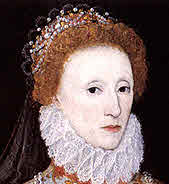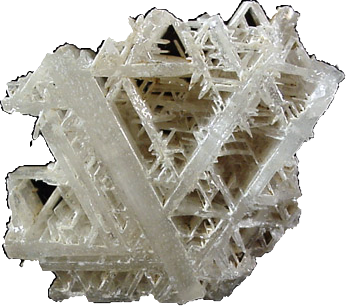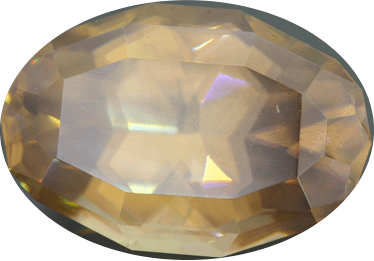Cerussite
|Structure: Othorhombic|Composition: Lead carbonate|Moh's Hardness: 3½| Elizabeth I used cerussite to cover scars and created a fashion.
Elizabeth I used cerussite to cover scars and created a fashion. A Cerussite Snowflake
A Cerussite SnowflakeOften occurring in attractive snowflake-like twinned crystals, cerussite is frequently found where lead deposits are exposed to the air.
 Cerussite is often faceted for Collectors
Cerussite is often faceted for CollectorsStones are white - pale brown and brittle with adamantine properties, but with a higher density than diamond, it is sometimes faceted in a brilliant cut, but too soft for jewellery.
The name comes from cerussa, Latin for 'white lead'.
Powdered cerussite in a paste was the compound used by Elizabeth I of England to whiten her face, as was the fashion. (Elizabeth was especially conscious of the scars caused by a bout of smallpox), unfortunately the compound is poisonous and caused further scarring which Elizabeth tried to hide by applying more cerussite!
© Silk Pixie 2008–2025
Designed and Created by Silk Pixie in Cheshire, England, Website and Product Pages by Silk Pixie| Latest Trends | Ordering Information | debbie@silkpixie.com | Delivery & Returns |


